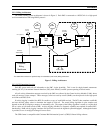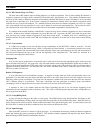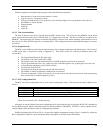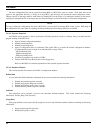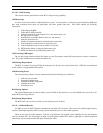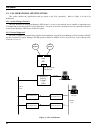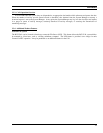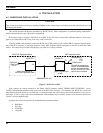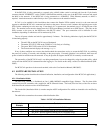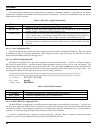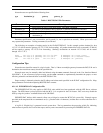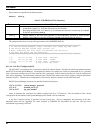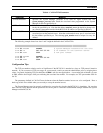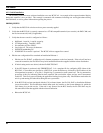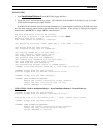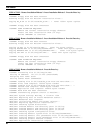
LBI-38965
19
If the BCU/CAL is being connected to a network, plug a MAU (either coaxial or twisted pair) into the 15-pin female
connector labeled "ETHERNET" on the TVME-712/M transition module on the rear of the BCU/CAL enclosure and attach
the MAU to the network. If the BCU/CAL is being connected to a 10BASE-15 (Thick Ethernet) network, no MAU is
required. Attach the transceiver cable directly to the 15-pin connector on the transition module.
If CAL is to be enabled for this installation, then connect the Emulex P2516 terminal server(s) to the same network
segment to which the BCU/CAL is connected and switch on the power. Be sure to wait 5 minutes after applying power to the
P2516 before continuing on to the next step. Even though it is a separate unit, the terminal server is an integral part of the
CAL. The terminal server must be situated near the VAX System Manger's terminal server (DECServer). The ports on the
P2516 connect to the ports on the DECServer with RS-232 cables. The port connections will be different for each
installation, depending on which sites will be monitored by CAL.
Turn on all power switches and wait for approximately 2 minutes. The following indications signify that the BCU/CAL
is functioning properly:
• The red LEDs on the BCU/CAL are not illuminated.
• The amber "STATUS" LED on the TVME-147 is lit dimly or is flashing.
• The green "RUN" LED on the fv5310 is illuminated.
• The console terminal displays the message
Login:
If any of these conditions are not met, then double-check the connections and try to restart the BCU/CAL by switching
the power off, waiting 15 seconds, and switching on the power again. If normal operation is not achieved, then leave the
power switched on and the network connected. It may be possible to diagnose the BCU/CAL remotely over the network.
The personality of the BCU/CAL unit is set during manufacture, but can be changed by using the product utility, which
can be run from the BCU/CAL command line after logging in. For details on this utility, see the User Interface Manual (LBI-
38967).
For BCU/CAL operation via the console terminal, refer to the User Interface Manual (LBI-38967).
4.2. SOFTWARE INSTALLATION
The following section describes the software distribution, installation, and configuration of the BCU/CAL application(s).
4.2.1. Distribution Media
The BCU/CAL software is distributed on four 1.44Mb MS-DOS compatible floppy diskettes. The first three disks
contain Ericsson GE executable code, supplied in ASCII S-Record format. The head (first few lines) of the files on these
disks identifies the software revision of the distribution.
The fourth disk (Installation Disk 4) contains template ASCII configuration files which are intended to be modified by
the end user.
The table below summarizes the contents of the distribution disks.
Table 1 - BCU/CAL Installation Diskettes
Installation
Diskette
Contents
1 LOADER.SX - “Bootstrap” loader for the BCU/CAL application.
2 BC_A.SX - First segment of the BCU/CAL executable image.
3 BC_B.SX - Second segment of the BCU/CAL executable image.
4 Product configuration files to be modified by the BCU/CAL end user.



